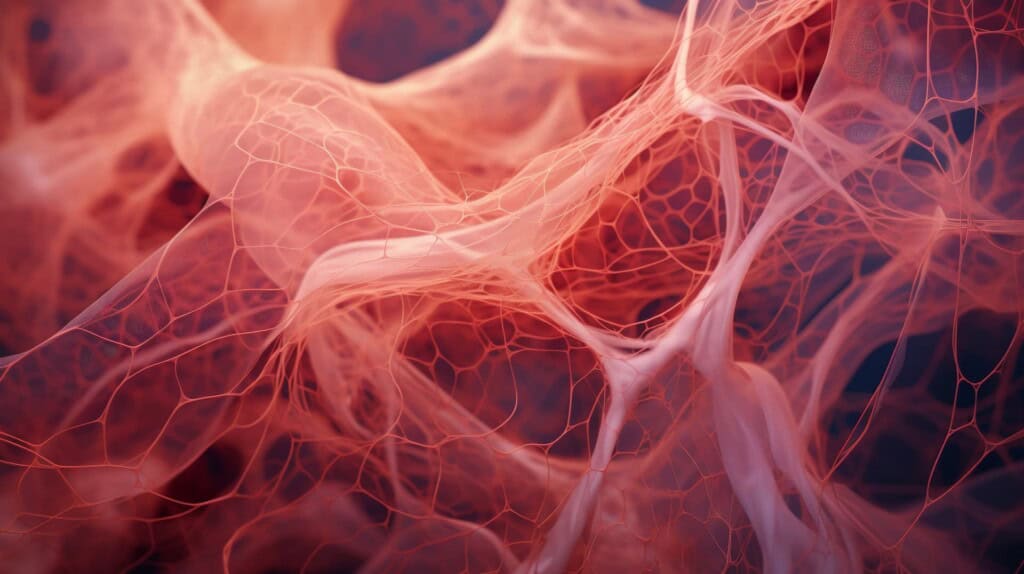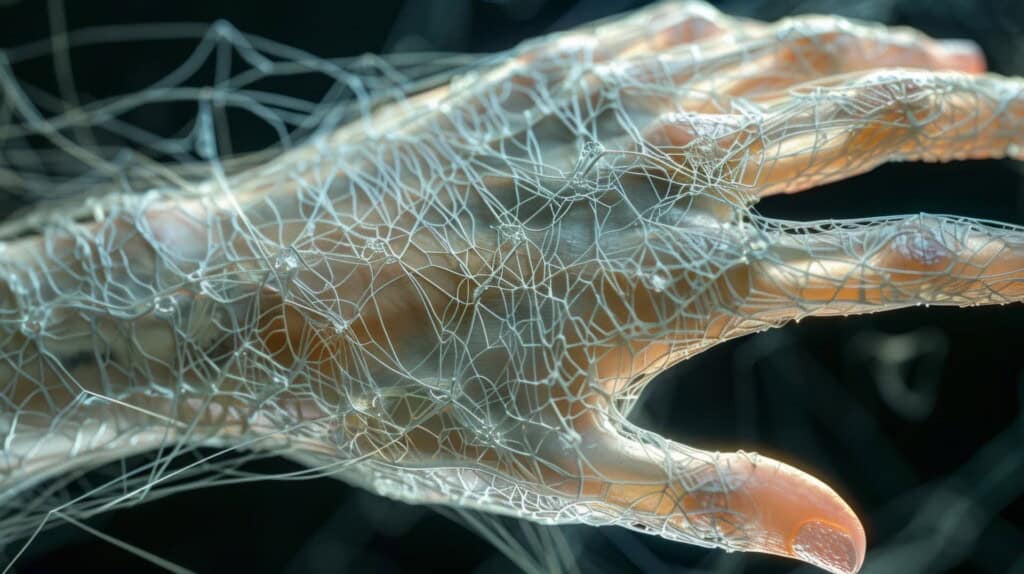You’ve probably blamed sore muscles or achy joints for your persistent aches and pains. But another tissue in your body could be the real culprit – and it’s one most people have never even heard of. It’s called fascia, and it plays a crucial role in how your body moves and feels.

Fascia is this thin, stretchy tissue that surrounds and supports every single structure in your body – your organs, muscles, bones, blood vessels, skin, you name it. It’s kind of like a web that holds everything in place.
But fascia is no ordinary casing. It’s actually made up of multiple layers, with liquid in between, that allows it to glide and stretch as you move. It’s designed to be flexible and elastic, almost like a well-oiled machine.
You see, fascia doesn’t just sit there passively. It’s got some pretty important jobs to do:
The problem is, there are a lot of things that can cause the fascia to become stiff and “sticky” instead. And when that happens, it can really wreak havoc on your body.
When your fascia is healthy and happy, it promotes smooth, pain-free movement. But factors like lousy posture, repetitive motions, injuries, and stress can mess with its integrity, leading to:
Fascial adhesion is when the fascia’s collagen fibers get stuck together, creating areas of tension and restriction. This can happen for a variety of reasons:
The symptoms of fascial adhesion include localized pain, stiffness, restricted movement, muscle imbalances, and poor posture. It’s a common underlying factor in many chronic pain conditions, such as tendinitis, sciatica, frozen shoulder, IT band syndrome, as well as others mentioned above and many more.

Bob Tricomi, a massage therapist and founder of Bodywork Masters, shares his thoughts on fascia. He says, “After years of studying fascia, I’ve found that using heat during fascial work helps loosen or soften adhesions (stuck areas) in the body’s fascia. Sometimes, fascia around the muscles stick together, forming adhesions between multiple muscles. This causes stiffness in the muscles and nearby tendons, which can lead to tendonitis. Applying heat allows the fascia, muscles, and tendons to relax and unstick, reducing tension from these adhesions.”
One of Bob’s clients shares their experience:
“My first visit to Bob was years ago when I was struggling with myofascial pain syndrome. I was suffering with chronic pain every day. After just one session, my pain decreased by 80-90%. Since then, I’ve been coming to Bodywork Masters every other week for pain maintenance, enabling me to live a pain-free life!”
– Terri R.
If stiff, restricted fascia is the root cause of your pain, bodywork techniques like massage, myofascial release, and structural integration can be incredibly helpful. These methods aim to:
The key is finding a practitioner who is trained in fascia-focused modalities and can take a comprehensive, whole-body approach to your care. They’ll work to identify the underlying causes of your pain and develop a treatment plan to address them.
Bob has seen firsthand how powerful bodywork can be for restoring fascial health and relieving chronic pain. An example illustrating this is Sarah, an avid runner who faced persistent knee pain attributed to IT band syndrome during her marathon training. Seeking relief, she turned to Bob, who specializes in fascial health and chronic pain relief. After a few sessions of myofascial release, she noticed almost complete removal of pain and improved mobility. With the pain gone, Sarah was able to continue her training and she successfully finished the marathon!
The good news is, there are some simple things you can do to keep your fascia healthy and supple:
By understanding the role of fascia and taking steps to keep it healthy, you can start to find relief for those nagging aches and pains. Your body will thank you!

Fascia might not get much attention, but plays a vital role in how we move, feel, and function every day. When we focus on keeping the fascia healthy, our body can heal better, we experience less pain and lead a more active life.
So, don’t just dismiss chronic pain as “old age” or “part of life.” Take a closer look at the role of fascia. By addressing this often-overlooked system, we can truly transform the way we move and feel. Keeping our fascia happy means less pain and more energy for doing the things we love. So, let’s give it the attention it deserves!